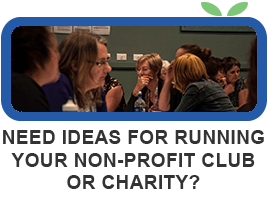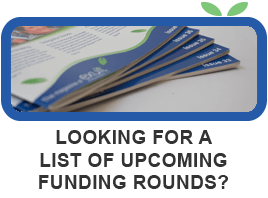Last updated August 17, 2016
Not that many years ago, very few New Zealanders had even heard of crowdfunding and those who had were sceptical of its value as a genuine fundraising tool. I remember watching an interview where one well known New Zealand fundraiser slammed Givealittle for being unnecessary and irrelevant. He even went as far as to call them ‘cowboys’.
Fast forward a few years and that same fundraiser is passionately advocating the use of crowdfunding platforms and Givealittle is helping thousands of kiwi organisations (and individuals) raise millions of dollars every year. If that’s what cowboys look like, I want to be one!
However, for all the money that is raised through online fundraising platforms like Givealittle and PledgeMe, crowdfunding is still not necessarily the silver bullet to your fundraising woes. Much like any other form of fundraising, there are crowdfunding campaigns that are hugely successful, but there are many that aren’t. If you’re keen to use crowdfunding in your fundraising mix, check out these top tips for making your campaign a run-away success.
Choose the Right Model
In a nutshell, crowdfunding is when a large amount of people each contribute a small amount of money to a specific project or cause. The premise is that every dollar counts, and if you can gather a big enough crowd, anything is possible.
However, there are different types of crowdfunding and crowdfunding platforms, and it’s important that you choose the right model for your cause. When it comes to raising funds for a charitable organisation, you have the option to use ‘flexible funding’ or ‘fixed funding’ campaigns. Both have their place, and both can be run with or without the promise of rewards for your donor.
Flexible funding campaigns are an opportunity for people to give to your project or cause in a general sense. You don’t have to publicly set a campaign target (unless you want to), and all contributions are passed on regardless of how much you raise. These types of campaigns are most commonly used for ongoing projects, where any amount of money will make a difference and the cause will continue regardless of how much money is raised online.
Fixed funding campaigns are ‘all-or-nothing’ campaigns. You set your fundraising target and the date by which you need it to be reached, and any contributions are only released if the target is met. These types of campaigns are most commonly used for projects where a minimum dollar value is required to get the project off the ground. In other words, if that dollar value isn’t reached online, the project isn’t going to happen.
Both flexible funding and fixed funding campaigns can be run as either donation or reward based giving programmes. Donation giving is usually suited for charitable causes that are completely reliant on public generosity. The donor receives basic acknowledgement for their gift, but there is no tangible reward given for their involvement.
Reward based programmes are usually suited for projects with some sort of tangible product or service as an outcome. For example; producing a book, developing an educational game, or creating an online programme for your service. The product (or something related to the project) is offered as a reward for a person’s support, and the more they give, the bigger the reward they receive.
Choosing the right model for your campaign is an essential first step, as that will dictate which crowdfunding platform you will use.
Choose the Right Platform
In New Zealand we have a whole heap of crowdfunding platforms to choose from, and a google search will find them all. However, if you are just getting started in the crowdfunding space, I recommend the following platforms:
Givealittle: www.givealittle.co.nz
Givealittle is New Zealand based with no upfront fees, however they do charge a 5% administration fee for any funds raised. You can run both flexible funding and fixed funding campaigns using a donation-only model.
Pledge Me: www.pledgeme.co.nz
Pledge Me is New Zealand based and provides a rewards based fixed funding platform. Projects funded through Pledge Me range from humanitarian to the arts, academic to innovative and everything in between. A 5% fee is charged for successful campaigns and credit card fees also apply.
Other platforms you may want to visit are www.fundraiseonline.co.nz and www.kickstarter.com.
Actively Draw a Crowd
Successful crowdfunding takes more than simply setting up a page and hoping people will get involved. You need to actively draw a crowd.
Before you even launch your page, make a list of people who are already a part of your crowd; friends, family, staff, volunteers, trustees, members, existing donors and if appropriate, clients and service users. As soon as your page is launched, these people need to be personally invited to get involved. No blanket emails or Facebook posts, just personal invitations with a compelling case for support.
Once you’ve got a few runs on the board, you need to draw in the by-standers using mass marketing and communication channels. Social Media is a great tool for sharing your message, but it’s not enough to say ‘Hey, we’re raising money, please go check it out’. You need to give them a real reason to do so.
One of the most effective ways to direct people to your crowdfunding page is via video. A well-made clip can tell your story in just a few minutes, and a video gives your cause credibility. At the end of the clip avoid the temptation to ask for money, and instead ask people to check out your crowdfunding page. It is there that you can ask for a contribution.
Mainstream media like newspaper, television and radio are also really effective tools for promoting your project. Just remember, crowdfunding in itself is not a newsworthy story – you need to find the angle in your project and pitch it in a well written press release. If you haven’t got experience or connections in this area, it is well worth paying somebody who has. National media coverage will take your crowdfunding campaign to a whole new level.
Have a Compelling Conversation
Getting the crowd to your page is one thing, but it doesn’t necessarily mean they are going to contribute. You need to give them a compelling reason to get involved, and you need to do it in just a few minutes. Photos, videos and stories are all important aspects of your crowdfunding page, but so too are the conversations you have with those early supporters.
Be committed to sharing regular updates and encourage your initial ‘crowd’ to leave messages about why they are choosing to support your cause. These third party endorsements help build credibility and give new visitors to your page confidence to get involved. A crowdfunding page is not about broadcasting a request for donations, it’s about truly engaging with people who are interested enough to take a look.
Remind, Remind, Remind
You will raise the most money at the beginning and end of your campaign, provided you are prepared to keep reminding people to give. For most people, asking once is not enough to stimulate action – even if they have every intention of giving. Often they will file it away to ‘do later’, and unless you remind them, later will never come.
Create a marketing and communications plan to ensure that your campaign is promoted on a regular basis. Include a range of different communication tools and decide on the key messages you want to share. Be consistently persistent for the length of the campaign, and you will reap the rewards.
Set the Right Target
If you are going to use the fixed funding ‘all-or-nothing’ model for your crowdfunding campaign, you need to carefully consider what that target will be. Setting your target too low will mean you are committed to completing a project without all the necessary funds. Setting a target too high means you may well miss out altogether.
Create a well-researched budget that outlines the minimum you will need to make the project happen, and allow some extra for the cost of any rewards you are offering. Next make a budget including all the nice-to-haves that would make your project really sing. Somewhere in the middle is a realistic target to aim for.
Consider Your Rewards
If you are going to use a rewards-based model, make sure you offer a range of rewards that people actually want. For small contributions (up to $20) a simple thank-you card or no-cost acknowledgement is sufficient, but after that people will want to see a reward that has value.
Depending on the project, you could include rewards such as invitations to an exclusive event, tickets to a show, signed photographs, dinner with the founder, or an once-in-a-lifetime experience. Remember, the idea with rewards is that people will stretch themselves beyond what they might originally give, so be creative. Rewards don’t always have to be a physical product, often experiences or a feeling of exclusivity are more effective. Plus – they are usually more cost effective for you.
Say Thank You
Whether you are offering rewards or not, it is essential that your supporters feel appreciated for their contribution. Don’t settle for the auto-response thank-you, take the time to contact each person individually. Whether this is their first gift to your organisation or the fiftieth, saying thank you is the best way to create a loyal fan and ongoing supporter.
If you think this article would be useful for your members, you are welcome to use it on your website or in your newsletter. We just ask that you let us know where it is being used, and that you acknowledge our website at the bottom of the article. If you are using the article online, please include a link to our homepage.




